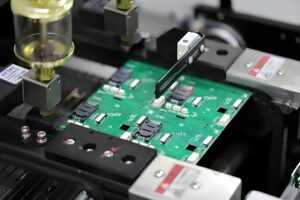In the field of SMT surface mount processing, small batch sampling orders and small batch production orders are two common production modes. Although they all involve SMT surface mount processing, there are significant differences in purpose, process, cost control, and flexibility.
1、 Difference in purpose
The main purpose of small batch sampling orders is to verify the design, test product performance, and inspect production processes. At this stage, customers typically hope to quickly obtain samples at minimal cost for functional testing, market feedback collection, or further research and development improvements. The sampling process allows designers and engineers to identify and resolve potential issues such as unreasonable component layout and poor soldering quality before actual production.
Small batch production orders are carried out after product design verification is completed, with the aim of meeting initial market demand or conducting small-scale market promotion. Small batch production marks the transition of a product from the research and development stage to the initial stage of commercial production, where production focuses more on stability and consistency to ensure product quality meets the requirements of large-scale production.
2、 Process differences
The process of small batch sampling orders:
Design confirmation: The customer provides design drawings and BOM (Bill of Materials), and the factory conducts preliminary review.
Material procurement: Due to the small quantity, spot procurement or special channels may be used to quickly obtain materials.
Production preparation: Create or adjust production procedures, prepare production equipment and fixtures.
Production execution: Small batch surface mount processing, usually including steps such as printing solder paste, mounting components, reflow soldering, etc.
Quality inspection: Conduct strict electrical and visual testing on the samples to ensure that they function properly.
Feedback and improvement: Make necessary adjustments and optimizations based on the test results and customer feedback.
The process of small batch production orders:
Preparation before production: Based on validated design and production processes, develop a detailed production plan.
Material procurement and management: Consider the advantages of bulk procurement, optimize inventory management, and reduce material costs.
Production line setup: Adjust the production line to meet the needs of mass production, including equipment debugging and personnel configuration.
Production process control: Implement strict quality control measures to ensure consistency and stability in production.
Finished product inspection and testing: Conduct 100% inspection or sampling inspection to ensure that all products meet quality standards.
Packaging and Shipping: Packaging according to customer requirements and arranging logistics for shipment.
3、 Cost control differences
The cost of small batch sampling orders is usually higher because they require one-time expenses such as design verification, material procurement, and production preparation. In addition, due to limited quantities, we are unable to enjoy the cost benefits of bulk procurement.
The cost of small-scale production orders is relatively low because it allows for the allocation of fixed costs (such as production line setup, equipment depreciation, etc.) to more products. At the same time, bulk procurement of materials can also reduce the material cost per unit product.
4、 Flexibility difference
The flexibility of small batch sampling orders is extremely high, as the design and production processes have not yet solidified and can be quickly adjusted based on customer feedback and needs. This flexibility helps accelerate the product development cycle and improve customer satisfaction.
Although small batch production orders also require some flexibility to cope with market changes, their flexibility is limited compared to the sampling stage. This is because the production line has already been set up and optimized for specific products, and frequent adjustments may affect production efficiency and product quality.
















